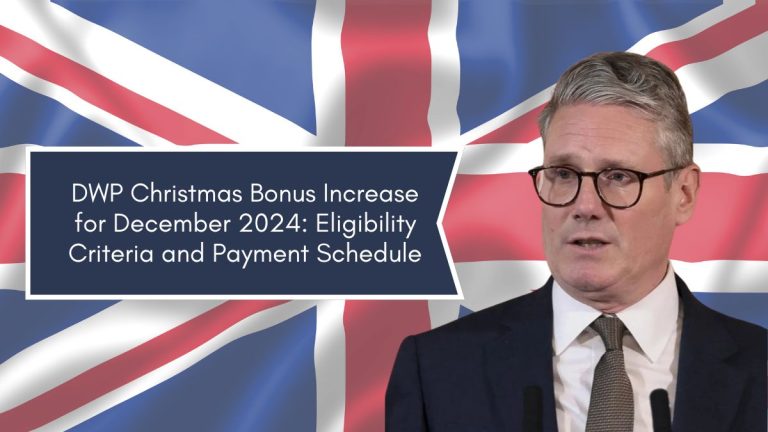In 2024, the Department for Work and Pensions (DWP) provided critical financial relief to help millions of UK households cope with the soaring cost of living.
One of the most impactful initiatives was the £299 cost-of-living payment, the final installment of a broader £1,350 support scheme.
If you haven’t received your payment yet, this guide will provide you with all the necessary details and steps to take.
Understanding the DWP £299 Cost of Living Payment
The £299 payment was part of the government’s strategy to alleviate the financial strain caused by inflation. Rising prices for essential items such as groceries, utilities, housing, and transportation have hit low-income families and pensioners particularly hard. The payments aimed to provide immediate relief to those most affected.
Breakdown of Financial Support Payments
The DWP rolled out a total of £1,350 in financial aid, distributed across three installments. Here’s an overview:
| Payment Amount | Payment Dates | Purpose |
|---|---|---|
| £301 | 25 April – 17 May 2023 | Initial support for rising living costs |
| £300 | 31 October – 19 November 2023 | Continued assistance amid persistent inflation |
| £299 | 6 February – 22 February 2024 | Final installment to address ongoing challenges |
Who Was Eligible for the £299 Payment?
Eligibility for the payments was automatic for individuals receiving means-tested benefits. Qualifying benefits included:
- Universal Credit
- Pension Credit
- Income Support
- Jobseeker’s Allowance (JSA)
- Employment and Support Allowance (ESA)
To qualify, recipients needed to have been receiving one of these benefits during the eligibility period.
Steps to Check If You’ve Received the Payment
If you’re unsure whether you’ve received the payment, follow these steps:
Review Eligibility Criteria
Ensure you were receiving a qualifying benefit during the payment window. Cross-check the eligibility guidelines on the DWP’s official website.
Check Your Bank Statements
Look for deposits marked as “DWP CLC Payment” in your account from February 2024 onward.
Understand Payment Delays
Although payments were scheduled between 6 February and 22 February 2024, some recipients may face delays due to technical or administrative issues.
What to Do If You Haven’t Received the Payment
If you believe you’re eligible but haven’t received the £299 payment, here’s a step-by-step guide:
Report Missing Payments Online
Visit the official UK government portal for cost-of-living payments. Provide the following details:
- Full name
- Date of birth
- National Insurance (NI) number
- Address and contact information
Contact the DWP Helpline
Call the DWP helpline to speak with an advisor. Be prepared to share your NI number and other relevant details.
Await a Response
The DWP typically investigates missing payments within two weeks. Follow up if you don’t receive a response within the stated timeframe.
Additional Financial Support Options
If you’re struggling with ongoing expenses, consider these other financial assistance programs:
| Program | What It Provides | How to Apply |
|---|---|---|
| Household Support Fund | Cash aid for essentials like food, utilities | Through your local council’s website |
| Council Assistance | One-off payments for energy costs | Contact your local council |
| Discretionary Housing | Help with rent payments | Via local council’s housing team |
Household Support Fund
This fund helps households with basic costs, including food, utilities, and clothing. Applications can be submitted via your local council.
Council Assistance Programs
Some councils offer one-time payments, typically around £140, to help residents cover energy bills.
Discretionary Housing Payments
Designed to support those struggling with rent, this payment is available to individuals already receiving Housing Benefit or the housing element of Universal Credit.
Why the £299 Payment Matters
The £299 payment was critical in helping households manage rising costs for essentials such as food, utilities, and transportation. By targeting individuals on benefits, the payment aimed to protect those most vulnerable to economic challenges, ensuring they could maintain their standard of living.
Final Thoughts
The £299 cost-of-living payment was a crucial lifeline for millions of UK households in 2024. If you haven’t received it, follow the steps outlined in this guide to check your status and resolve any issues.
Additionally, explore other support options like the Household Support Fund and council assistance programs to ease financial pressures.
Staying informed and proactive can make a significant difference in managing the challenges of rising living costs. Take action today to ensure you receive the financial support you’re entitled to.
Who Is Eligible for the £299 Payment?
Anyone receiving means-tested benefits, such as Universal Credit or Pension Credit, during the eligibility period qualifies for the payment.
What Should I Do If I Haven’t Received My Payment?
Check your bank statements and eligibility. If the payment is still missing, report it online or contact the DWP helpline.
Can I Apply for the Payment If I Missed the Eligibility Period?
No, the payment is automatically issued to those who met the eligibility criteria during the designated period.







